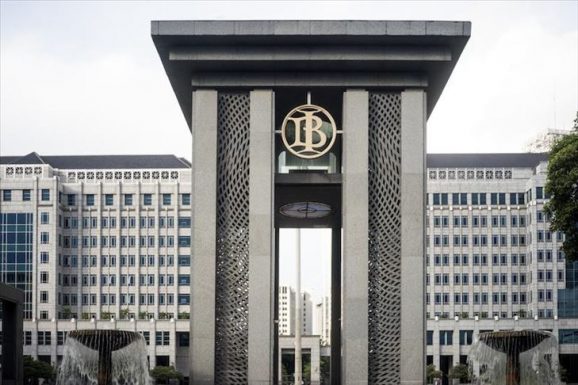Bank Indonesia prioritises FX stability as spreads tighten
Rupiah opens at 16,620 per USD as DXY and CL=F remain strong; BI holds rate at 4.75%, reserves steady near $149b, and EMB reflects stable risk profile while JKSE shows resilience in a shifting regional market landscape.

The Indonesian rupiah opened at IDR 16,620 per US dollar on 23 October 2025, continuing a modest depreciation trend from early September, when the pair traded near 16,300. The move is indicative of policy recalibration rather than disorder. Bank Indonesia (BI) kept its seven-day reverse repo rate at 4.75% on 22 October, pausing after a total of 150 basis points in cuts since September 2024, as headline CPI registered 2.65% year on year in September—well within the 1.5–3.5% target range. This stance signals BI’s commitment to currency stability, seeking to limit imported inflation pass-through without sacrificing macro resilience in the face of global dollar strength (DXY).
The rupiah’s softness is grounded in narrowing interest differentials and episodic portfolio outflows. The US 10-year Treasury yield remains anchored between 4.4% and 4.6%, sustaining dollar strength, while Indonesia’s 10-year government bond yield at about 6.0% results in a nominal spread insufficient to draw persistent offshore flows. Foreign exchange reserves declined to $148.7 billion in September from $150.7 billion in August, covering roughly six months of imports. This small drawdown underscores the operational cost of BI’s active currency defence using spot, domestic non-deliverable forwards, and FX term-deposit tools. Periodic liquidity tightening—evidenced by early October repo rates briefly exceeding the policy rate—reflects the balance-sheet consequences of two-way FX intervention, although system liquidity remains stable.
Indonesia’s macro fundamentals are solid. Real GDP growth is expected at 5.0% for 2025, underpinned by private consumption and robust public investment, partially offset by softer commodity exports, particularly in coal and palm oil. The fiscal deficit is projected to remain under 2.6% of GDP, and government debt is contained near 39% of GDP, affording headroom if global volatility intensifies. The current account, near balance earlier in the year, has turned modestly negative as commodity receipts slow and capital goods imports related to domestic industrialisation increase. With fuel and food together comprising a substantial share of the CPI basket, BI’s willingness to tolerate currency slippage is limited; each 1% depreciation in the rupiah transmits directly into administered and food prices, complicating further disinflation, especially given energy market volatility (CL=F).
Markets have responded with composure. The Jakarta Composite Index (JKSE) has been flat to modestly higher month-to-date, in line with regional equities under the shadow of a firm dollar. The government bond yield curve has steepened by 5–15 basis points across the mid-tenor segment since late September, and offshore holdings of rupiah bonds remain stable in the mid-teens as a percentage of outstanding—well below pre-pandemic peaks above 30%—which moderates the risk of abrupt, foreign-led selloffs. Corporate funding costs have firmed marginally as banks defend liquidity, but system-wide capital adequacy remains robust, and loan growth in consumer and MSME portfolios continues at a mid-single-digit pace, supporting domestic demand even as manufacturing capex slows.
In the ASEAN context, the rupiah’s trajectory is consistent with regional peers under persistent US dollar strength and higher-for-longer US rates. The Malaysian ringgit, Thai baht, and Philippine peso have each underperformed month-to-date as terms of trade soften and capital flows recalibrate. Indonesia’s inflation-targeting credibility, broadening local investor base, and conservative fiscal management keep the sovereign risk premium compressed, visible in a tighter spread to US Treasuries and in reduced volatility compared with the 2018–2020 cycle. The EMB index reflects Indonesia’s stabilising effect among emerging market borrowers, assuming reserves remain robust and inflation expectations anchored.
The forward outlook is defined by calibration. Three objective markers will confirm that the rupiah’s latest drift is an orderly adjustment: first, FX reserves holding above $145–150 billion through the fourth quarter; second, a stable IDR/USD range between 16,400 and 16,700 into Q1 2026, with headline CPI inside the 1.5–3.5% band; and third, a 10-year Indo-UST yield spread maintained within 150–200 basis points alongside orderly DNDF market pricing. If these thresholds are met as BI holds the policy rate, Indonesia will reinforce its reputation for disciplined FX management and macro stability, supporting capital flows and investment execution into 2026.





